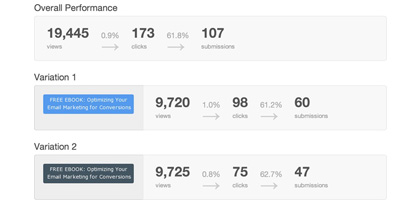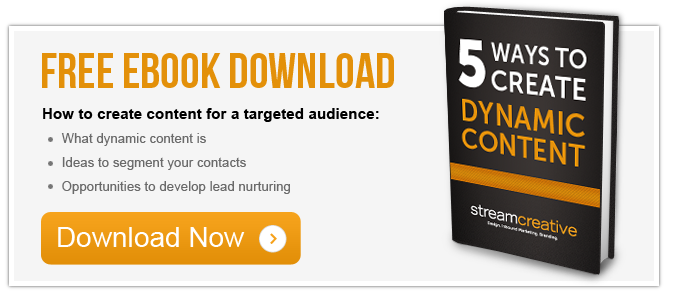 We discuss quality content with our customer partners on a daily basis and most know that it is an essential component to marketing success. As our ability to target messages with dynamic content expands, so does the need to create content that provides an educational, exciting and inspiring experience for web visitors and email recipients. The best way to ensure content is relevant to both current customers and prospects is not necessarily about changing your message, but customizing it with dynamic content. In order to do this effectively, you need to know something about the preferences of those you are targeting. You’ll be hearing a lot more about dynamic content in the future but for now, here’s an introduction and what you need to know:
We discuss quality content with our customer partners on a daily basis and most know that it is an essential component to marketing success. As our ability to target messages with dynamic content expands, so does the need to create content that provides an educational, exciting and inspiring experience for web visitors and email recipients. The best way to ensure content is relevant to both current customers and prospects is not necessarily about changing your message, but customizing it with dynamic content. In order to do this effectively, you need to know something about the preferences of those you are targeting. You’ll be hearing a lot more about dynamic content in the future but for now, here’s an introduction and what you need to know:
What is dynamic content?
Have you ever visited a website and an ad pops up for something that you have recently searched for or researched on the web? Or visited a site and content on that page speaks directly to your demographics, geographic location and interests? Those are examples of dynamic content and the expanding ability we have as marketers to place information that speaks directly to a targeted consumer based on the visitor’s profile data or history of interactions with the company. It is about producing content to create different experiences for visitors tailored for individual interests.
What should I consider when creating dynamic content?
· Demographics: Characteristics about the individual, including name, company name, job title, phone, and email address.
· Firmographics: Characteristics about an organization, including location, annual revenues, number of employees, and industry.
· Past behavior: Responses to emails or actions taken on your website can help inform a person’s interests and/or place in the buying cycle.
· Products or services already purchased: Using information about past purchases can help you up-sell or cross-sell relevant products or services.
· Psychographics and preferences: This takes into consideration a prospect’s interests, attitudes, and opinions.
· Behavior of related contacts: Understanding the actions, interests, and preferences of others in the recipient’s company is critical in a purchase that involves many stakeholders.
How do I integrate dynamic content?
Producing successful dynamic content is not hard to integrate but does require planning and a platform solution that allows easy content generation without having to go through another department or agency. Resources such as Hubspot, Marketo, and Pardot provide great information about the power of dynamic content and how their platforms assist with customization based upon collected and observed information from website visitors.
Your content management system will need a core set of tools to achieve dynamic content for your website or email campaigns:
Centralized Marketing Database
Your marketing database is the brain behind your dynamic content. It stores your contacts’ download and interaction history with your site.
Easily Editable Web Pages
A dynamic site has to be one that is easily editable. If you have to go through another department or a contractor, updating your site will always be a bottleneck.
Smart Content Generator
Smart content is content that is informed by data and a set of rules. A smart content generator will show or hide content (blocks of images and text) based on your marketing database.
Integrated Email System
Dynamic content doesn’t have to be relegated to your website alone. If your email system is tied into your contacts database, you can also add dynamic content in email sends.
How do I put a dynamic content plan into place?
Identify your customers and prospects that will benefit from customized content. Don’t create the content just to create it – be sure to have a strong reason for individualization.
· Content categories can be based on demographic data such as job function, industry classification, geographic region, behaviors such as pages visited and links clicked
· Evaluate leads to separate prospects from customers or create segments based on behavioral patterns from past emails and Web analytics
· Connect segments with email or landing page sections where you want to dynamically insert content
· Create default content that is relevant when a visitor / recipient cannot be segmented. Then create specific content that is most relevant to each segment.
· Reuse and repurpose dynamic content to maximize efficiency
Marketers are continually challenged with balancing messages that are appropriate for one-to-many and the opportunities to create messages targeted one-to-one . It is important to identify when each should be used and put practices in place that prepare for dynamic content creation. Have you already begun collecting the necessary data? If so, you are at an advantage and one step ahead of many of your competitors. If you have not started, the time is now and in the coming weeks we’ll provide more information to assist with this process.





